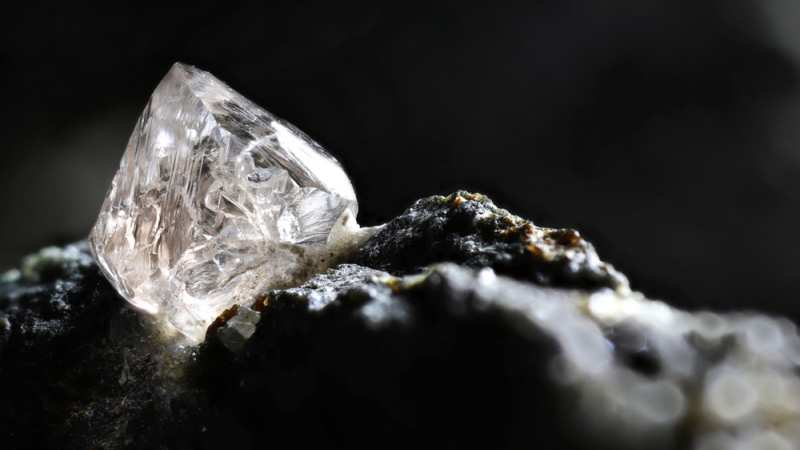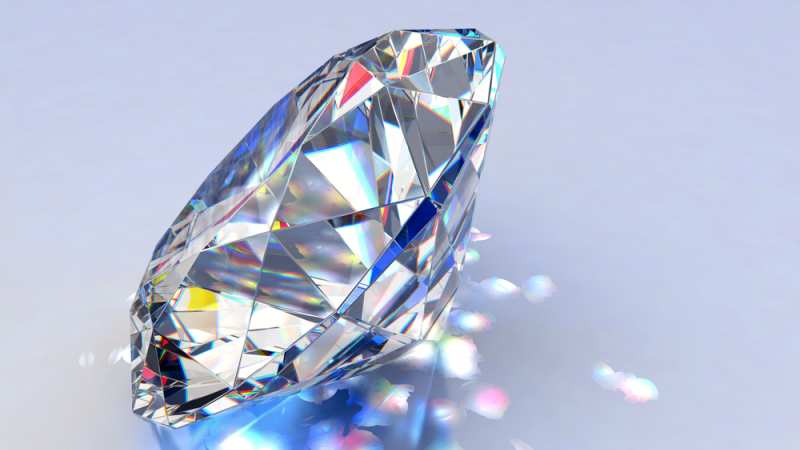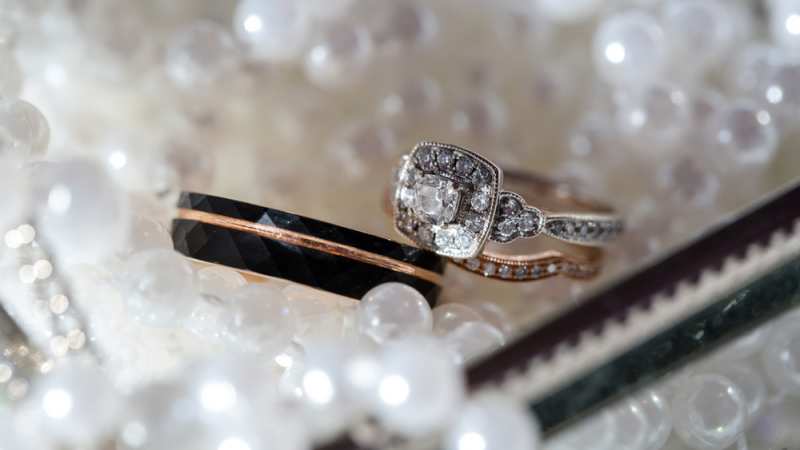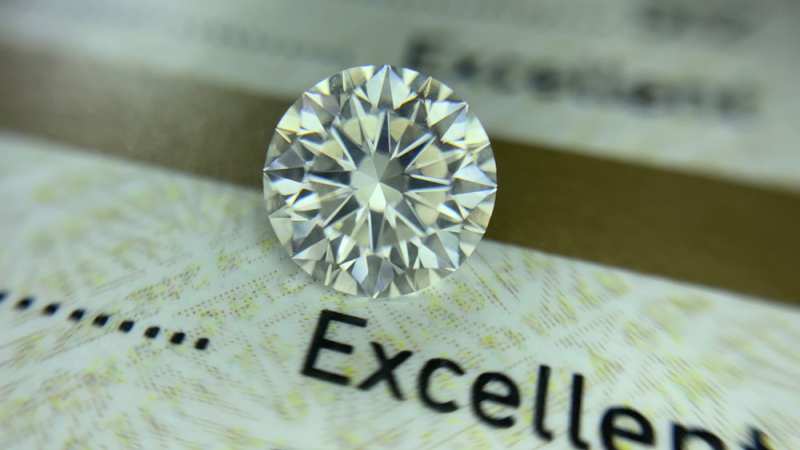When it comes to diamonds, their exceptional sparkle is often associated with the term “brilliance.” However, there are other factors that contribute to a diamond’s overall glimmer. In this article, we will explore what diamond brilliance is and delve into the various elements that contribute to a diamond’s dazzling appearance. Let’s begin our exploration of diamond sparkle and shine.
DESIGN YOUR OWN ENGAGEMENT RING: START WITH A SETTING OR START WITH A DIAMOND. IT’S REALLY UP TO YOU!

Do Diamonds Shine When They’re Found?
Unveiling the dazzling journey of diamonds requires us to venture deep beneath the Earth’s surface. Diamonds do not possess their renowned brilliance in their natural state. Originating from the upper mantle, approximately 100 miles below the Earth’s surface, diamonds remain hidden until extraordinary volcanic eruptions expose them.
Unfortunately, these eruptions occurred long before human existence, leaving us with limited knowledge about the formation of diamonds. Our understanding mainly stems from the analysis of diamonds found within cooled magma, the solidified lava rock.
Most gemstones, including diamonds, appear as aggregates of crystals fused together. This unique structure contributes to the diverse and varied descriptions of their appearance. As a result, diamonds, when initially unearthed, bear a rough and opaque exterior, lacking the impressive sparkle they are renowned for.
But fear not, as the next chapter of our exploration will reveal the transformation that diamonds undergo, unlocking their true brilliance and captivating beauty. Patience shall be rewarded, so let us proceed on this captivating journey.

What Causes A Diamond To Shine?
The captivating journey of a diamond unfolds as it embraces the transformative power of light. The color, brilliance, fire, sparkle, and even fluorescence of a diamond are all intricately tied to the interplay of light. Jewelers have honed their craft to understand which shapes and proportions maximize a diamond’s radiance.
This remarkable transformation is achieved through the art of cutting and polishing, which we will delve into shortly. For now, let us focus on the facets that adorn the surface of a finished diamond. These facets serve as portals through which light interacts with the gemstone. While some light is reflected off the facets, a significant portion penetrates the diamond and converges toward its center.
Within the diamond, these rays bounce off its internal walls, akin to the reflections that occur when numerous mirrors are meticulously arranged in a room. After a series of reflections, the light wave finds its way out through the facets, resulting in the dispersion of light.
This intricate dance of light poses a challenge for the diamond cutter, who skillfully manipulates the movement of light, giving rise to various captivating phenomena.
Brilliance, the radiant display of light, is achieved by carefully directing the light waves as they enter the diamond. The cutter sculpts the facets, skillfully bending the light to reflect rays from any angle and guide them to the top of the diamond, aligning with the viewer’s line of sight. When this alignment is achieved, the resulting reflection is deemed brilliance.
However, there are other enchanting plays of light within a diamond.
Fire is the mesmerizing display of colored flashes that reside within the diamond. It occurs when the rays bounce off the internal walls of the gem, leading to the dispersion of light. As white light consists of a spectrum of colors, each color bends and reflects uniquely, creating a breathtaking display of separated hues within the diamond.
Sparkle, or scintillation, involves directing the rays not only to the diamond’s top for brilliance but also across its body, allowing them to seemingly dance between the internal walls. This alignment of light waves gives rise to the captivating phenomenon known as sparkle, a subtle distinction from brilliance that adds a whole new dimension to the diamond’s allure.
Fluorescence, another fascinating attribute, refers to the phenomenon where certain diamonds emit a typically blue glow when exposed to ultraviolet light. This property, known as diamond fluorescence, can last as long as the UV light is present. Some diamonds even possess phosphorescence, where the glowing effect lingers for an extended period. Notable examples include the legendary Hope Diamond, which exhibits this enchanting ability. These phenomena are attributed to impurities within the diamond that interact with photons from daylight, resulting in the remarkable glow.
Intriguing aspects such as sparkle, fire, and fluorescence contribute to the diamond’s overall beauty and allure. Each facet of light unveils a unique facet of the diamond’s mesmerizing character, making it a captivating marvel to behold.

What’s The Process Of Cutting Diamonds?
The cut of a diamond holds the utmost significance among the four C’s, as it directly influences every other aspect of the stone. So, let’s explore this facet further.
To truly grasp diamond cutting, we must trace its origins. The rich history of diamond cutting is deeply ingrained in Indian literature and manuscripts, as India has long been recognized as the ancient birthplace of diamonds. It is where diamonds were first discovered.
While ancient artifacts suggest that diamonds were known and utilized during the Buddhist period around the fourth century B.C., there is limited literature on when exactly diamond cutting began, indicating that early practices were likely focused on polishing.
For an extended period, cutting and polishing were regarded as synonymous terms.
In 1665, the French jeweler Tavernier, during his journey to India, provided the first documented description of cut diamonds. He observed that Indian artisans were primarily engaged in polishing the natural faces of gems. They possessed knowledge of grinding and removing impurities or blemishes. If an impurity ran deep, they skillfully concealed it by incorporating a multitude of facets.
Tavernier noted that some of the most prominent stones were sent to European professionals for further processing. However, it remains unknown whether these European artisans refined their skills in collaboration with Indian craftsmen or brought superior knowledge with them.
Thus, the Indian diamond-cutting style left an indelible mark on some of the most renowned gems, such as the Koh-i-Nor. This style eventually laid the foundation for the modern norm, which aimed to remove the minimal amount of diamond material while utilizing facets to enhance the gem’s natural shape.
In Europe, diamond cutting also gained significance. In Germany, a guild was established in 1375, requiring a six-year apprenticeship for admission. Unfortunately, the methods employed by these early artisans remain shrouded in mystery.
It was in the 15th century that diamonds began to be worn by women in Europe, marking a pivotal moment. Previously, diamonds were reserved as exclusive royal ornaments and only adorned princes. This shift in fashion opened the doors to mass production of jewelry and compelled artisans to refine cutting and polishing techniques on a larger scale.
The primary objective of these processes was simple: to achieve brilliance. The pivotal moment came with the discovery of the cutting wheel, which, despite its name, was primarily used for polishing. Lodewyk (Louis) van Bercken invented primitive iron polishing wheels in 1476, utilizing diamond powder remnants from the cutting process. The process used at that time bears similarities to the techniques employed today.
This discovery played a crucial role in achieving the symmetrical diamond shapes we see today, although the actual polishing process was invented a century earlier. It also influenced the variety of diamond shapes produced. Through experimentation, it was found that gradually reducing the corners of the diamond to create a circular or round shape maximized brilliance.
However, there is a trade-off with this modern method. The weight of a cut and polished diamond can result in a loss of up to 52% of its initial weight, even in favorable cases. Nonetheless, European craftsmen relentlessly pursued increased brilliance and fire, valuing these qualities over the quantity of material lost.
In 1919, Marcel Tolkowsky, a third-generation diamond cutter and mechanical engineering student, established a reputable standard that remains influential to this day. His perfect formula, known as the Brilliant Cut, aimed to achieve maximum fire and brilliance. This cut entails precisely cutting 58 facets at mathematically determined angles to facilitate the optimal play of light, ensuring complete reflection and refraction of rays.
However, it is crucial to exercise caution, as excessive light refraction in a small stone can diminish clarity, a vital aspect that significantly impacts a diamond’s value.
Now, let’s delve into the process of transforming a rough diamond

How You Can Maintain Brilliance At Home – Bits Of Advice
Diamonds have a natural affinity for grease, and even holding a diamond with your fingers can lead to a build-up on its surface, diminishing its brilliance and fire.
Fortunately, there are ways to address this issue:
One effective method is to clean your diamond once or twice a week using water and mild dish soap. Gently scrub the diamond with a toothbrush to remove any remaining dirt from hard-to-reach areas. Rinse the piece thoroughly with clean water and dry it using a soft, lint-free cloth. If you choose to clean it over a sink, remember to close the drain to prevent accidental loss.
Avoid using chlorine bleach and abrasive substances like toothpaste or household cleaners, as these harsh chemicals can potentially damage the jewelry setting.
You may have heard of ultrasonic cleaners that utilize low-frequency vibrations to dislodge dirt from the gem. However, exercise caution when using such cleaners, preferably in a professional setting, as they can cause loose stones to become dislodged. It’s advisable to consult with your jeweler before using an ultrasonic cleaner.

Diamond Brilliance: A Quick Recap
Congratulations on reaching this point and discovering the answer to the key question, “What is diamond brilliance?”
As we have discussed, fire, scintillation, and fluorescence all play crucial roles in the interaction of light waves, ultimately determining the brightness of your diamond.
Transforming a rough, opaque stone into a sparkling gem requires a meticulous cutting process. When considering a diamond, it is essential to visit a reputable jeweler and review the gem’s certificate, which provides information about the four C’s and more.
Pay attention to the cut grade on the certificate and aim for diamonds with a rating of VG (Very Good) or EX (Excellent). For the ultimate choice, select diamonds with excellent polish, finish, and cut, often referred to as “Triple X” diamonds.
Here’s an additional tip:
The care you provide for your diamond directly influences its brilliance. Implement a simple and cost-effective cleaning routine at home to ensure that your diamond jewelry remains exquisite for years to come!


